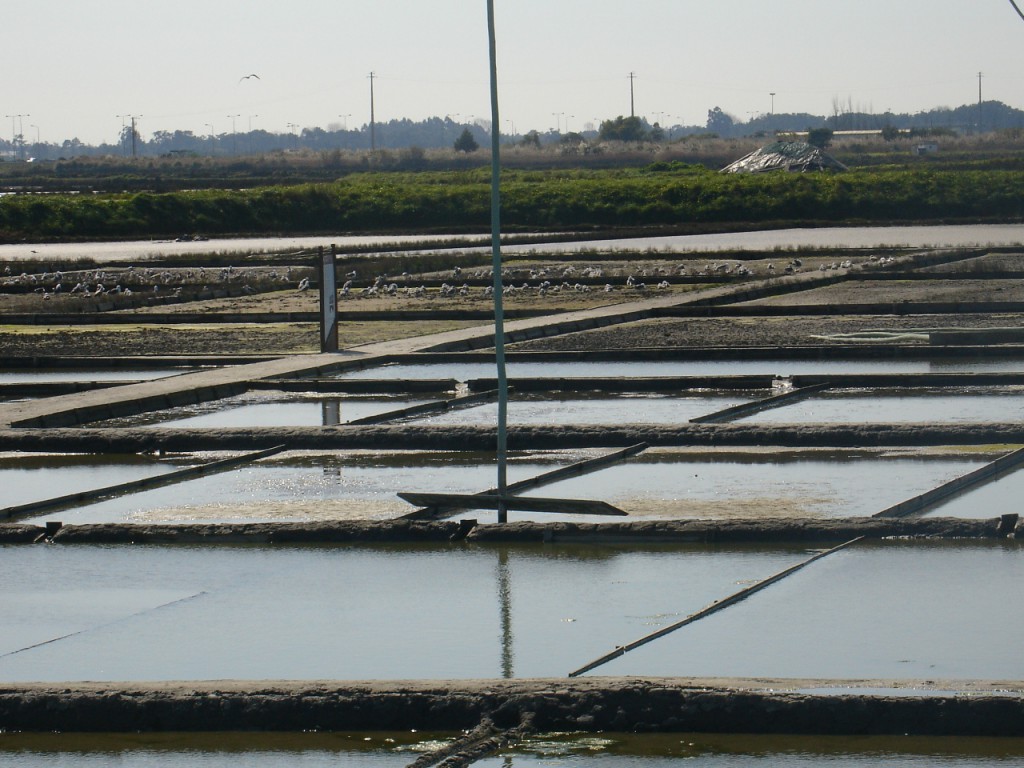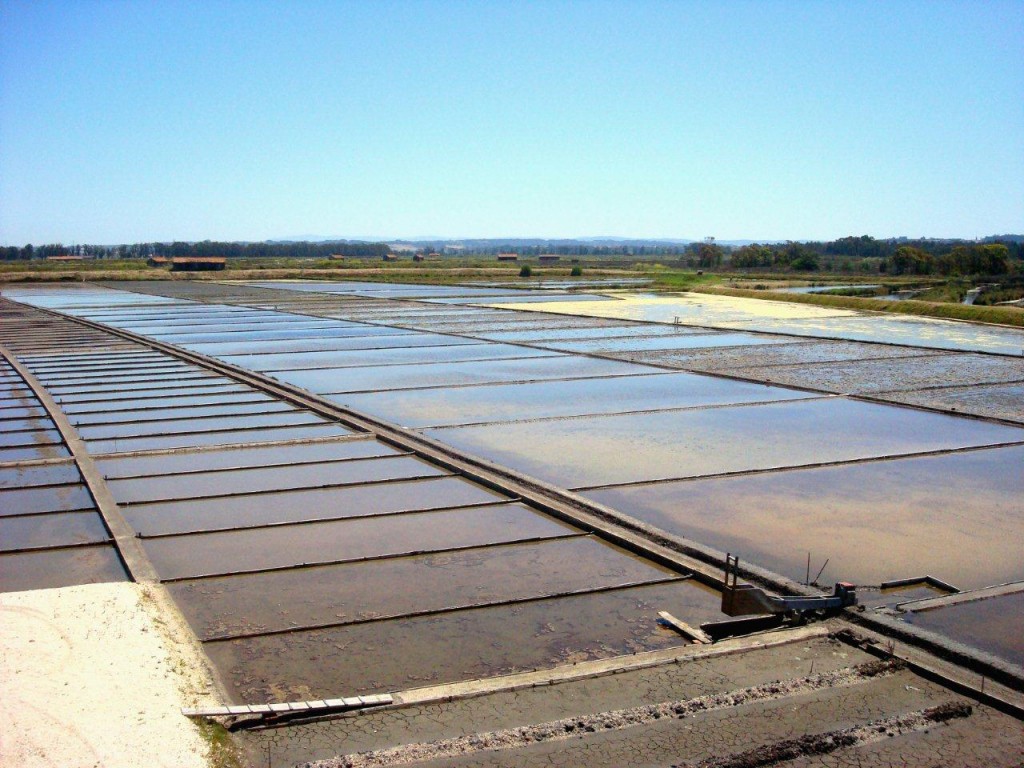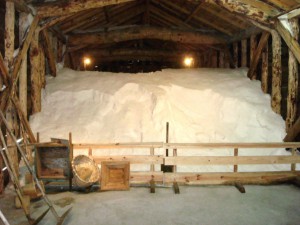For centuries, salt detained a preponderant role in worldwide economy and had a great influence on the culture of those connected with it. Portugal’s great geographic and climatic conditions, as well as the use of adequate techniques for the development of the salt industry, have turned Portuguese salt in one of the most sought-after products in the country. The perspective was of a large scale production, targeting very specific and amply known ends such as its use as seasoning (it was done by the Romans and Greeks and other ancient civilizations), conservation of meat, fish and other food or even in the preservation of furs and leathers. This activity gave origin to many others, stimulated taxes, revenues and mercantile techniques and moved social demonstrations of which the words salary and salaried remain as witnesses (the word salary comes from the Latin word salarium argentum, which means “payment in salt”).
The importance that salt has had in Portuguese economy and society is manifested not merely in the historical records and documents of the time, but also in the impact that this activity had on the landscape and territory occupation. For example, in the region of Aveiro, salt is in every corner of the city: in the tile panels, in the stone drawings of the Portuguese pavement, in the monuments, in the toponymy and ceramics which use it as theme and element in the glazing technique.
The oldest document to report on the exploration of salt ponds in Portugal is dated 959 AD and appears in the donation of lands and salinas from the region of Aveiro by the Countess of Mumadona, their owner, to the Monastery of S. Salvador, also founded by her in the city of Guimarães, even though there are older vestiges of such an exploration previous to Roman domination. By observing the behavior of several Portuguese salt production centers throughout history, it is possible to establish three main production centers with commercial preponderance, both national and international, namely Aveiro, Setúbal and Lisbon. Aveiro comes up as the principal production center during the Middle Ages, as confirmed by documents of that period. During that time, the salt from Aveiro was not only commercialized in the entire country (particularly in the North) but also in Northern Europe, being essentially used to salt meat and fish, like cod for instance. In the 16th century, the salinas of Setúbal felt an astonishing increment, gaining importance in the country and superseding the other salt pond centers, including Aveiro’s center, and being the number one in terms of national salt production. In the 19th century there was a clear decrease in salt production in the salinas of Setúbal and finally, at the very end of the 19th century and beginning of the 20th century, Lisbon became the predominant center for national and international salt production.
Although historical references (documental and toponymic) attest to the presence of salinas in practically all the Portuguese Atlantic estuaries and lagoons, in the 20th century this activity was carried out solely south of Ria of Aveiro (lagoon system located on the west coast of Portugal where the Aveiro salinas are located), combining the salinas accordingly: Ria de Aveiro, Figueira da Foz, Óbidos’s Lagoon, Tejo’s, Sado’s and Mira’s estuary and Algarve. The exploitation of salt springs (inland salinas) was, until the early 20th century, confined to Rio Maior. The oldest document referring to these salinas dates back to 1177, but it is believed that salt was utilized from pre-historic times. Furthermore, in the first half of the 20th century other salt springs were discovered in the region of Leiria, which were also exploited. In the middle of that same century the salt industry entered a deep crisis, and more than half of the existing active salinas were eradicated or transformed into alternative profitable activities, whilst others were abandoned and thus subjected to destruction. The main outlined reasons for the near extinction of this activity were the lack of profitability due to the development of cold storage techniques and salt extraction technological deficiencies, with other industrialized explorations producing larger amounts of salt at a lower cost. The production of sea salt by industrial means uses mechanized techniques (some very sophisticated and making use of heavy machinery) in large dimension units and in which the number of collections per annual cycle of production is small. In industrial salinas almost all compounds are removed in the process of salt treatment, except sodium chloride, with lower abundant elements being lost which may have health benefits. Traditional salinas are small when compared with the mechanized industrial or partially mechanized semi-industrial ones and salt is gathered manually, with hand instruments (e.g. scrapes, spades, brushes), with several crops per salting season. They operate without the use of powerful pumps, but with the tide or with wind driven pumps. The traditional salt is harvested from the crystallizers and is piled up on wooden boards next to the crystallizer ponds, and left to dry. When thoroughly dried the salt is stored (after removal of the upper layer of the heap), packed and sold mainly for alimentary purposes. Since this salt is not subjected to any processing (is not washed or whitened like refined salt), it possesses more than 80 elements. While some can be found in small quantities, others like magnesium, calcium and potassium are present in significant quantities.
Currently, in Portugal, there are five regions producing sea salt along the coast (Aveiro, Figueira da Foz, Tejo’s and Sado’s estuaries and Algarve) and in each one it is still possible to find traditional active salinas. Even today inland salinas of Rio Maior remain active and salt is produced according to traditional methods, unlike the salinas of Leiria which are currently inactive. In each group of salinas of a certain region there are variables in their structure, manner of exploration, usage, customs and nomenclature, that reflect the adaptation of several situations and curious internal migrations, translated in the exchange of technologies from one region to the other. The art of salt-making carried out for hundreds of years in artisanal salinas, the tools, buildings, boats, wind-pumps, traditions and legends, as well as the salt as a chemical product, is part of the history of Portugal itself. The quality of salt produced also varies in each region considering the differences in their location, climate action in each region, type of water that is used and even the soil of the salina, factors that influence their characteristics.
It is remarkable that this activity has been maintained and salt is still produced in the same ancient way. That is partially due to the revival of interest in salt production by traditional methods as the result of the emergence of new market niches that are sustained by supply/demand logic of differentiated products, also associated with a strong territorial matrix as well as referenced and elevated quality. Furthermore, the awareness of the benefits in terms of both health and flavor of salt obtained in a 100% natural way, supplanting the industrial option, has propelled the producers to assure the continuation of this activity. In fact, the salt produced in artisanal salinas essentially springs from a particular knowledge accumulated through generations, ancestral harvest practices, natural environmental conditions that respect ecosystems and biodiversity, potential of the region in which the productive unities are implanted and a demanding monitoring of the water quality used in the nourishment of the salina.
Trips to salinas were supported by the Portuguese Foundation for Science and Technology (FCT), through the projects PTDC/MAR/108369/2008 and PesT-C/Mar/LA0015/2011, through FCT, COMPETE, QREN and EU funds.
The above photographs were taken by the authors between 2010 and 2012.
Carolina Rodrigues,
Researcher at Ciimar (BI of the project PTDC/MAR/108369/2008).
Natividade Vieira,
Researcher at Ciimar, Professor at FCUP, Aquatic Biosystems Editorial Board member

Matthew Landau
Latest posts by Matthew Landau (see all)
- March biology highlights: octopuses, heavy metal, and pocket-sized DNA sequencing - 10th April 2015
- From farm to plate, make food safe! - 7th April 2015
- Dried up! The effects of 2014 on Western US Lake Ecosystems - 13th November 2014



Comments